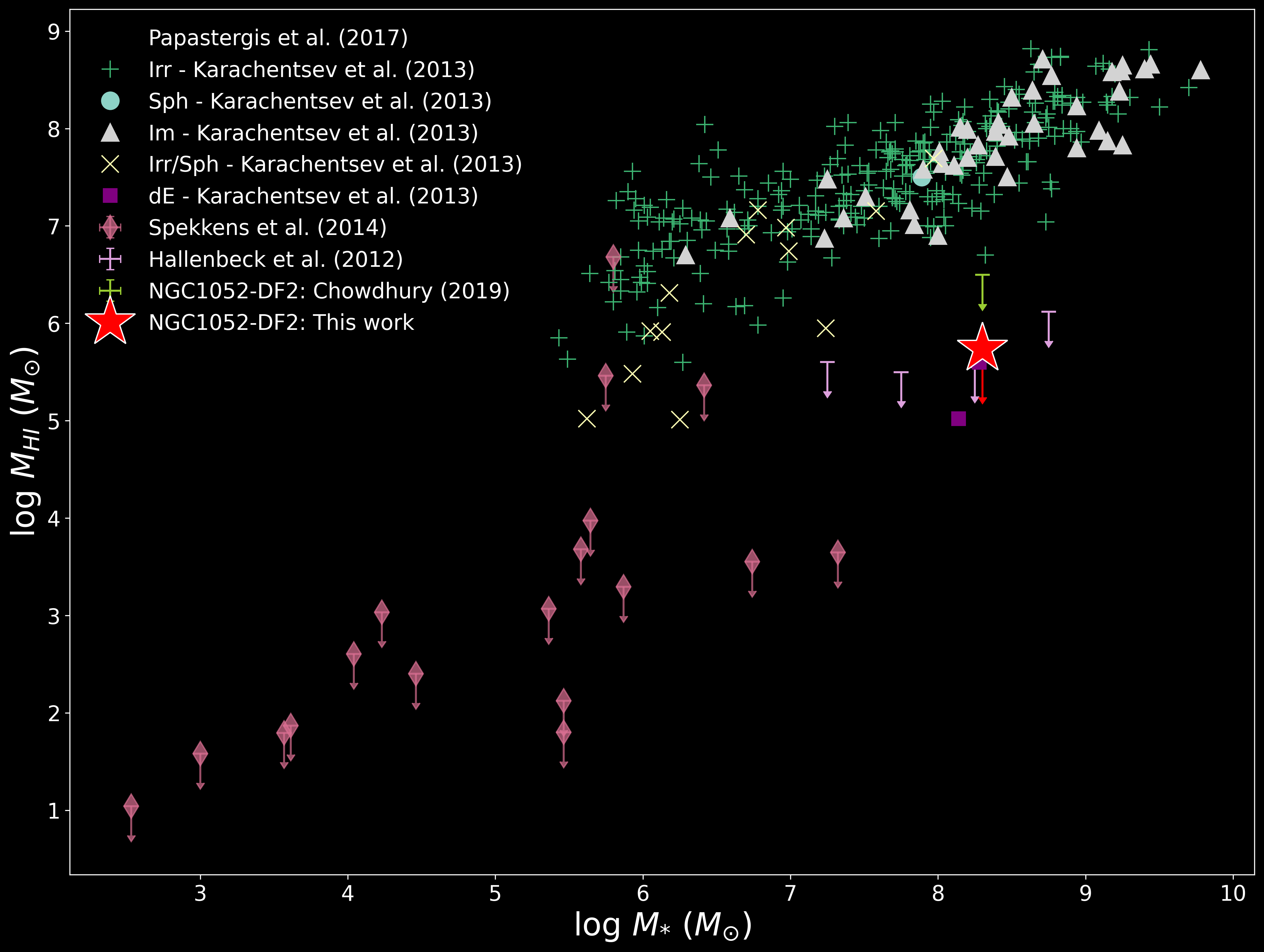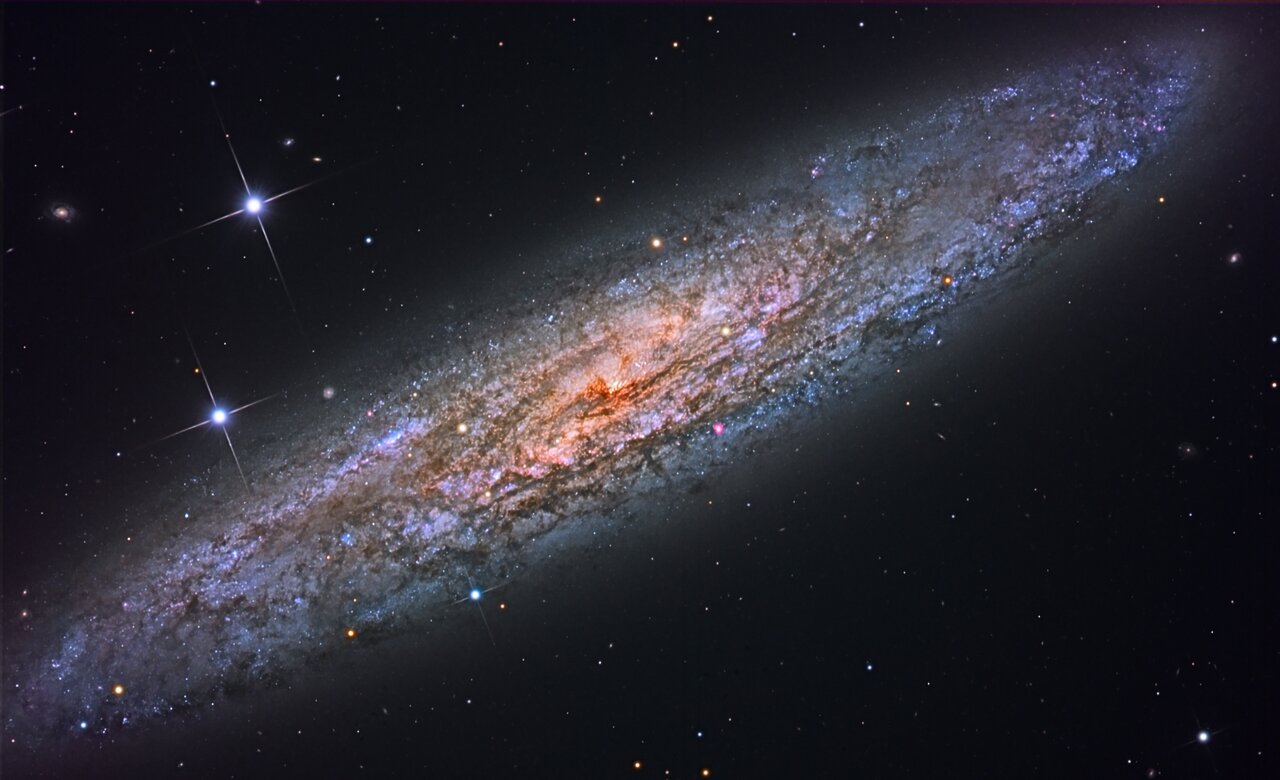Research
Projects
NEUTRAL HYDROGEN IN THE CIRCUMGALACTIC MEDIUM

Fig. 1. Cumulative HI flux profiles in 18 nearby galaxies. Most profiles continue to rise out to large radii, indicating the presence of diffuse HI within the CGM.
I am extremely interested in the neutral gas that flows through the circumgalactic medium (CGM) that potentially ends up fueling star formation in a galaxy disk. My latest work on this includes a survey of all MHONGOOSE galaxies that can be observed by the Green Bank Telescope (GBT), which included neutral hydrogen (HI) observations of 18 nearby galaxies ranging from classical dwarfs to large spirals. Among the most intriguing results of that study (Sardone et al. 2021) was the cumulative HI flux measured outside the central galaxy disk (Fig. 1), extending many kpc into the CGM. A follow up to this study is my ongoing work on the IMAGINE survey’s single dish counterpart: Parks-IMAGINE, which surveys the entire virial volume of ~25 nearby spiral galaxies with excellent HI sensitivity.
I have had the privilege to work with one of Ohio State University’s graduate students, Sanskriti Das, on a very exciting project which resulted in detection of HI emission out to ~100 kpc along the minor axis of two nearby edge-on galaxies (Das, Sardone et al. 2020). This detection is suggestive of a larger volume of neutral hydrogen within the CGM that has yet to be detected. This led to a larger upcoming program on the GBT which will look along both major and minor axes in other nearby edge-on galaxies for this same extended diffuse emission.
STAR FORMATION
I am interested in tracing the entire process of star formation in galaxies, from the large-scale inflows of gas onto the galaxy disk down the cloud-scale, sub-kpc regions within the interstellar medium (ISM) that form individual stars. I am working within several collaborations to understand this process. I work within the PHANGS collaboration as the head of the HI working group, with a goal of collecting the highest resolution HI observations of all ~100 nearby PHANGS galaxies. I am also working on the core data team of a new extra-large program on the VLA called the Local Group L-Band Survey, imaging six Local Group galaxies down to cloud-scale resolution HI and continuum, where we will be able to detect and identify individual star forming regions.
Examples of extreme star formation are upcoming with our new 8” HI observations with the MeerKAT telescope of the nearby starburst galaxy, NGC 253. We will examine the inflowing and outflowing gas in all of its phases with new+archival multiwavelength data to better understand this extreme source.
DWARF GALAXIES
Dwarf galaxies allow us to test our knowledge of the Universe. Thus far, it has been challenging to successfully apply the standard cosmological model of the Universe (ΛCDM) at small scales, specifically dwarf galaxy sized scales. This challenge is apparent in the cusp/core problem, the missing satellites problem, and in the too-big-to-fail problem, to name a few. I am using extremely sensitive, high spectral resolution observations of dwarf galaxies to understand the kinematics within the dark matter halos of these galaxies, and to particularly shine a light on the too-big-to-fail in the field challenge. I have used the Parkes radio telescope to measure the HI in nearby dwarf galaxies with stellar masses below 107 M⊙.

Stellar mass – HI mass relation for dwarf galaxies. Constraint on the HI mass for NGC1052-DF2 shown with red star marker.
I am also working with the Merian team to understand the nature of dark matter in dwarf galaxies. The goal of this survey is to characterize the dark matter, feedback, and black holes in star forming dwarf galaxies. We are sampling 100,000 dwarf galaxies within an 800 square degree area using the Blanco telescope in Chile. We will also use the gas kinematics to probe the dark matter halo in a subset of galaxies which can help to explain the baryonic effects on dwarf galaxy rotation and dark matter kinematics.
I have been able to make the tightest constraint on the HI mass (Sardone et al. 2019) in NGC1052-DF2, the ultra-diffuse galaxy lacking dark matter. I used the GBT to observe this strange galaxy, which not only lacks dark matter, but also lacks a reservoir of gas as our constraints determined it to be extremely gas-poor.
Collaborations
LGLBS: Local Group L-Band Survey (PI: Leroy, A.)
Role: Core data team – currently imaging, reduction
https://www.lglbs.org/
MHONGOOSE: MeerKAT Observations of Nearby Galactic Objects – Observing Southern Emitters (PI: de Blok, W.G.)
Role: Lead organizer of GBT-MHONGOOSE data
https://mhongoose.astron.nl/
PHANGS: Physics at High Angular Resolution in Nearby GalaxieS (Co-PIs: Schinnerer, E.; Leroy, A.)
Role: HI working group lead
https://sites.google.com/view/phangs/home
The Merian Survey: Dark Matter, Star Formation, and Feedback in Dwarf Galaxies (Co-PIs: Leauthaud, A.; Greene, J.)
Role: Leading the Merian cross-correlation with gas surveys
https://merian.sites.ucsc.edu/
IMAGINE: Imaging Galaxies Intergalactic and Nearby Environment (PI: Popping, A.)
Role: Core team member; observer (ATCA)
IMAGINE-Parkes: (PI: Sardone, A.)
Role: Team lead; observer; data group lead

